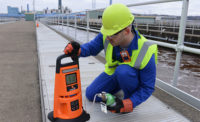Hand injuries in bolting are far too commonplace in heavy industry, but they can be avoided entirely by removing the pinch point – where hands and fingers are placed in harm’s way – through eliminating the use of a reaction arm and backup wrench while performing bolting work.
OSHA reports that 27 percent of all workplace injuries are related to the hands and fingers. In heavy industry, the figures rise. For example, the International Association of Drilling Contractors has reported that 43 percent of all oil and gas industry injuries occur to workers’ hands and fingers.
Common and costly
But hand injuries are not just prevalent. They are also very costly for both the companies who either employ or hire outside contractors and their indemnifiers. During massive bolting jobs, employees suffer hand injuries before they even have a chance to react. The result is anything from broken bones to mutilating, crushing and debilitating injuries.
One hand injury can cost between $50,000 and $250,000 in losses, not including a resulting lawsuit. The U.S. Bureau of Labor Statistics reports that the average hand injury claim has now exceeded $6,000, with each lost-time workers’ compensation claim reaching nearly $7,500. And these figures aren’t just bolting injuries. These figures include all types of hand injuries in the workplace.
The figures are staggering, and companies with employees or contractors that perform heavy industry bolting work are not addressing the core fundamental problem. Companies are in a cycle of continuing to put their employees at risk and paying high insurance premiums to protect themselves against these traumatic calamities, which are now avoidable.
Bolting technology that eliminates the pinch point caused by the reaction arm, which is used to stop the tool from turning, is available. Sooner or later, companies, or maybe OSHA, will drive further implementation in the workplace of this hands-free technology to keep employees safe when bolting.
Complicated risk
When dealing with large, heavy products that require comparably large, heavy equipment, bolting becomes a complicated safety issue. Why do hand injuries occur?
Often, it is miscommunication when one person is operating a pump control switch while the other is positioning the tool. In a loud environment with multiple employees handling different aspects of a large bolting job, the odds of a mishap increase. Sometimes employees are in different locations if the bolting is being done in a confined or hard-to-reach location.
The use of a reaction washer system eliminates the need for a torque wrench’s reaction arm as well as the need for a backup wrench on the backside of the application -- removing all pinch points from the job. This technology is now being put into use by companies looking to protect workers and add efficiency to their jobs. Many tool users are recognizing that antiquated bolting tools and practices compromise operator safety.



